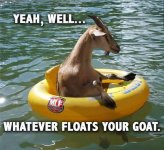Dray
New member
I am in the process of buying a 2015 F3S and I am wondering what the actual
octane requirement is. Is there a benefit to hi octane? My manual for my GL1800
recommends hi octane but everyone seems to run regular with no ill effects.
While I am at this, is there any recommendations for pilot/co-pilot backrest. Also will
probably need armrest for the co-pilot. Need to keep everyone happy. Especially since
I do not have to sell the GL trike to get the F3S.
Thanks in advance!!
Dray
octane requirement is. Is there a benefit to hi octane? My manual for my GL1800
recommends hi octane but everyone seems to run regular with no ill effects.
While I am at this, is there any recommendations for pilot/co-pilot backrest. Also will
probably need armrest for the co-pilot. Need to keep everyone happy. Especially since
I do not have to sell the GL trike to get the F3S.
Thanks in advance!!
Dray

